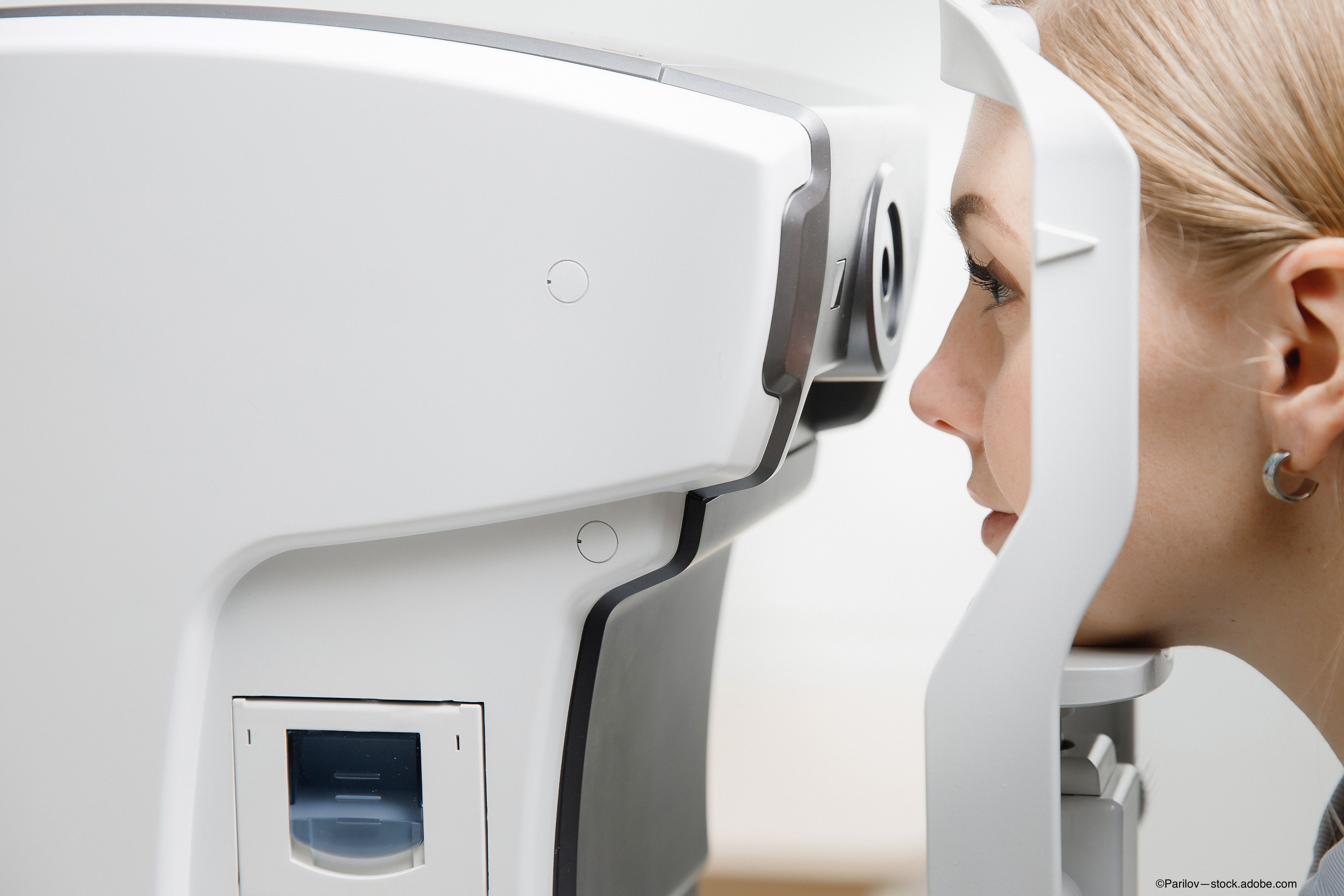Combining SD-OCT and UWF improves macular pathology detection
Dual imaging may reduce costs, unnecessary referrals, telehealth study results show.

Findings of a retrospective, comparative cohort study demonstrate benefit for integration of spectral domain optical coherence tomography (SD-OCT) with ultrawide field (UWF) imaging in a diabetic retinopathy (DR) telemedicine screening program.
Lloyd P. Aiello, MD, PhD, presented study data from 422 eyes of 211 patients with diabetes who were consecutively imaged between January 8 and March 16, 2020, using the commercially available platform Monaco (Optos), which allows SD-OCT and UWF imaging in a single sitting. The participants were seen in a free UWF image-based DR teleophthalmology program at Joslin Diabetes Center in Boston, Massachusetts.
Related: Outlook is bright for telemedicine in ophthalmology
The results showed that the dual imaging substantially increased detection and reduced false positive assessments of diabetic macular edema (DME) and epiretinal membrane (ERM).
“Given the reduced effort, compact footprint, and reduced overall cost of integrated SD-OCT/UWF devices, their use in large DR screening programs could substantially improve disease identification and reduce unnecessary referrals,” said Aiello, a professor of ophthalmology at Harvard Medical School and director of the Beetham Eye Institute of Joslin Diabetes Center.
“However, it should be noted that this study only evaluated 422 eyes and all images were evaluated in a centralized reading center using standardized protocols,” he said. “Thus, the applicability of the findings in other settings is unknown.”
Related: Spotlighting telemedicine in the year of a pandemic (podcast)
Because FDA approval of normative OCT measurements for the Monaco instrument is pending, the OCT images were evaluated qualitatively using a standardized template.
Each scan was evaluated for macular pathology, including looking at the foveal contour and looking for macular edema, ERM, signs of macular degeneration, and other macular diseases. The UWF graders were masked to the OCT images and OCT findings, and graders evaluating the SD-OCT images were masked to the UWF images and findings.
Related: Evaluating patients for a retinal disorder (video)
The 211 patients included in the study had a mean age of 53.5 years. Based on UWF grading, DR was absent in 58% of eyes and 93% of eyes had no DME. Eyes with DR spanned the spectrum of severity, but the distribution was weighted toward less severe disease with most eyes having mild nonproliferative DR.
Sixty eyes (14.2%) were graded as having referrable DR, which was defined as moderate nonproliferative DR or worse or any level of macular edema.
Related: Exploring common types of retinal disorders (video)
With UWF imaging, less than 1% of eyes were ungradable for determining DR severity and less than 1% were ungradable for determining DME presence. For both modalities, less than 1% were ungradable for overall macular pathology.
Macular pathology was identified by UWF in 8.1% of eyes and in 13% of eyes by OCT imaging. DME was the most commonly identified pathology on UWF imaging (75%) but accounted for only 36% of macular disease identified by OCT. ERM accounted for 29% of macular pathology on UWF imaging but 52.7% of macular disease by OCT.
Direct comparisons between the UWF and SD-OCT gradings showed relatively good agreement when the determination was that DME was not present—when UWF imaging alone found DME was not present, SD-OCT found DME in only 1.5% of those eyes. However, when the UWF image grading identified DME as present, the determination was not confirmed by SD-OCT in 75% of those cases.
Related: The use of telemedicine for wet AMD treatment (video)
“Overall, UWF image grading suggested that DME was present in 4.7% of eyes, [whereas] grading by SD-OCT determined DME was present in only 2.1% of the cohort,” Aiello explained. “Thus, UWF alone had low sensitivity and low positive predictive value for DME detection, but high specificity and high negative predictive value compared [with] SD-OCT.”
The results were similar in considering detection of clinically significant macular edema (CSME), although the sensitivity of UWF was even lower for this diagnosis. Approximately 27% of eyes with CSME present on SD-OCT were identified by UWF imaging alone.
Related: How telemedicine is forging a new chapter in eye care
ERM was reported as present by UWF image grading in 2.4% of eyes and by SD-OCT in 6.8% of eyes. Only 3.4% of ERMs detected on SD-OCT images were identified on UWF imaging alone. When UWF imaging alone found ERM was absent, SD-OCT found an ERM in 6.8% of eyes. When UWF grading showed that ERM was present, however, only 10% of those cases were confirmed by SD-OCT.
Lloyd P. Aiello, MD PhD
E: lloydpaul.aiello@joslin.harvard.edu
This article is based on a presentation made at the Association for Research in Vision and Ophthalmology’s virtual 2021 annual meeting in May 2021. Aiello is a consultant to Optos but is not paid for his services.
Related Content: Diabetic Retinopathy | Imaging | Diabetic Macular Edema | Ophthalmology
Newsletter
Keep your retina practice on the forefront—subscribe for expert analysis and emerging trends in retinal disease management.